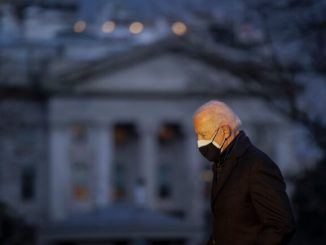

Sometimes a patient needs to heal an entire lifetime.
Take, for example, the all too typical patient that I see at the clinic: in their 60s, overweight, struggling with high blood pressure, and seeking acupuncture for joint pain. Upon consultation, I listen to the story of a lifetime of poor choices that include eating the standard American diet of nutrient-devoid, toxic food; overconsumption of alcohol; a high-stress job; being sedentary; and getting less than adequate sleep.
This archetypical patient has been deteriorating over the last few decades, culminating in a diagnosis of osteoarthritis in a hip joint. The “solution” is total joint replacement, but the hesitant patient decides to investigate other options. After a tour of the offerings of physical therapy and chiropractic care, the patient hobbles into our office, desperate for pain relief.
I have a lot of compassion for this patient. I tell them—as I tell all my patients—that I’ll do my best. Often the response is that they aren’t expecting miracles, a curious sentiment because it feels miraculous—at least to me—to achieve any lasting reduction in joint pain by just sticking tiny pins in different parts of one’s body. This feeling doesn’t come from a lack of faith in my medicine; rather, I know what I’m up against and what it’ll take to turn the tide.
To be abundantly clear, this patient will likely need to quit drinking alcohol, adopt an anti-inflammatory diet, sleep a minimum of seven hours per night, exercise 30 to 60 minutes every day while staying generally active the rest of the waking hours, and—with any hope—engage in some type of regular meditative or contemplative practice.
A highly motivated client may adopt those principles, but the majority display an attitude of making a minimum effort while hoping for maximum results. They may view these suggestions—collectively—to be too radical a change. But, to me these principles are simply the ingredients of the recipe for a healthy life.
Cancer patients are often handed a similar checklist of lifestyle changes, plus a host of other additions to their daily routines. To get to the point where cancer is diagnosed, decades of multiple imbalances have accrued. Detoxification of oneself and one’s environment is added to the top of the priority list, as well as deep introspection and a rooting out of unhealthy thoughts, habits, and relationships.
Some cancer contributors, such as trauma, may have occurred decades ago, exerting their depleting influence on the body over a lifetime. Others are gradual and insidious, such as a diet of processed foods leading to multiple nutrient deficiencies.
For a cancer patient, my advice is to dig deep. Be alert to recent lifestyle changes and stressors that may underlie a sudden health crisis, but look with a wider lens at the big-picture influences that have been brewing over years and decades.
All forms of healing are an exercise in change. If you want different results, you have to be willing to do something different. Looking over the breadth of a lifetime of destructive choices; sometimes there’s much that needs to be done differently.
Brandon LaGreca, LAc, MAcOM, is a licensed acupuncturist in the state of Wisconsin. He’s the author of “Cancer and EMF Radiation: How to Protect Yourself From the Silent Carcinogen of Electropollution” and “Cancer, Stress & Mindset: Focusing the Mind to Empower Healing and Resilience.” He shares his thoughts at Empowered Patient Blog.





Be the first to comment